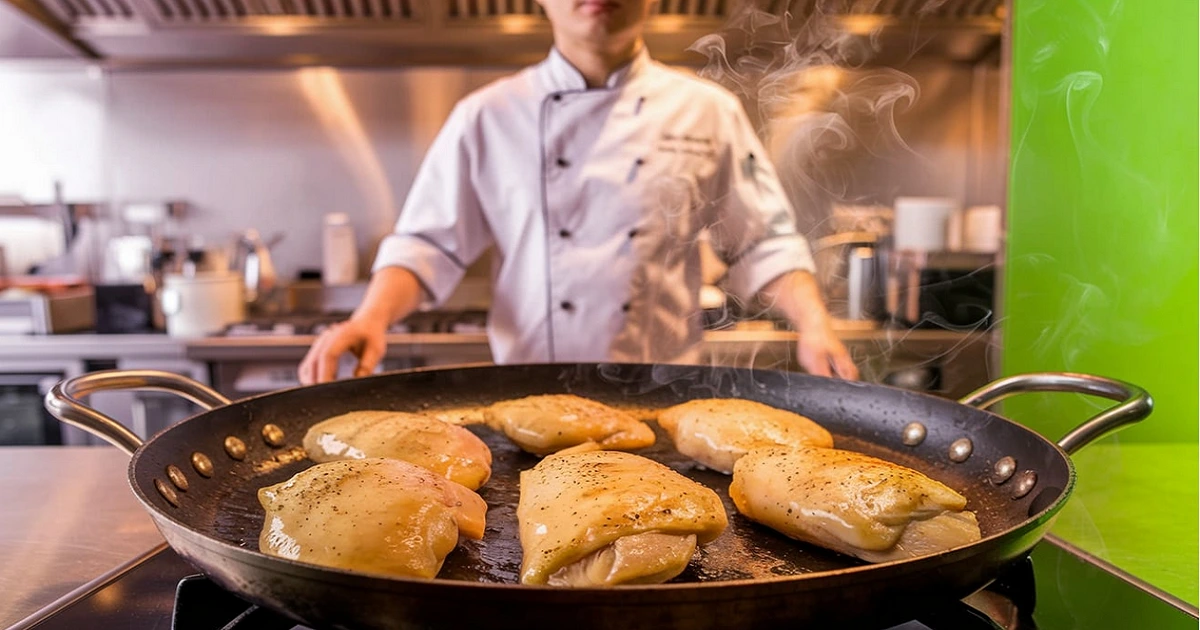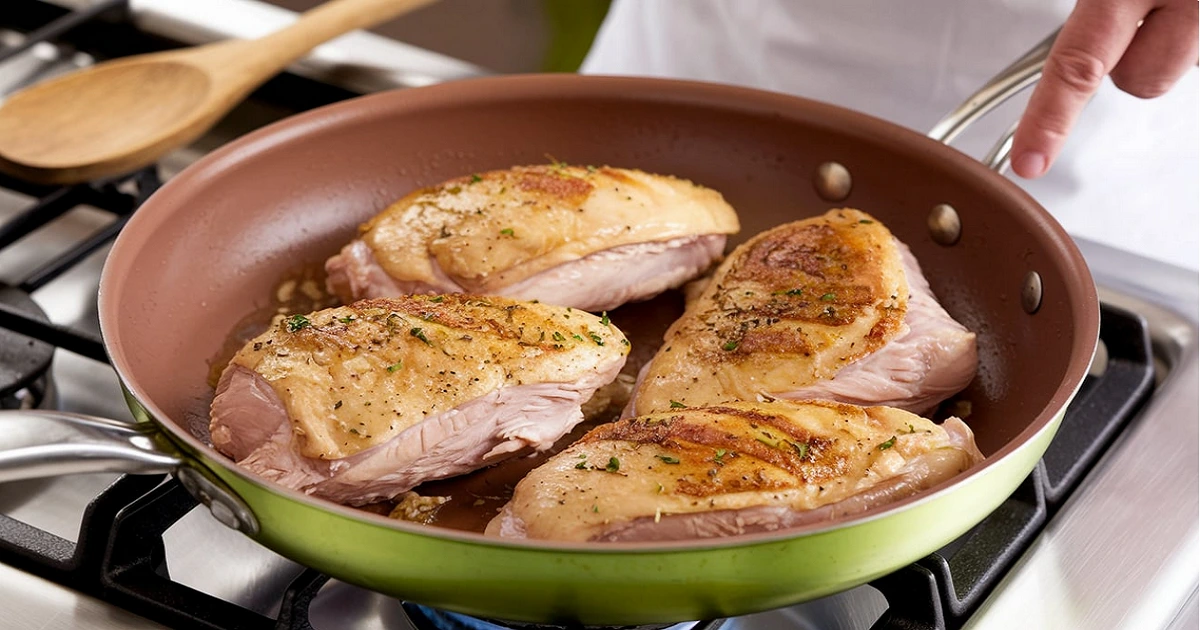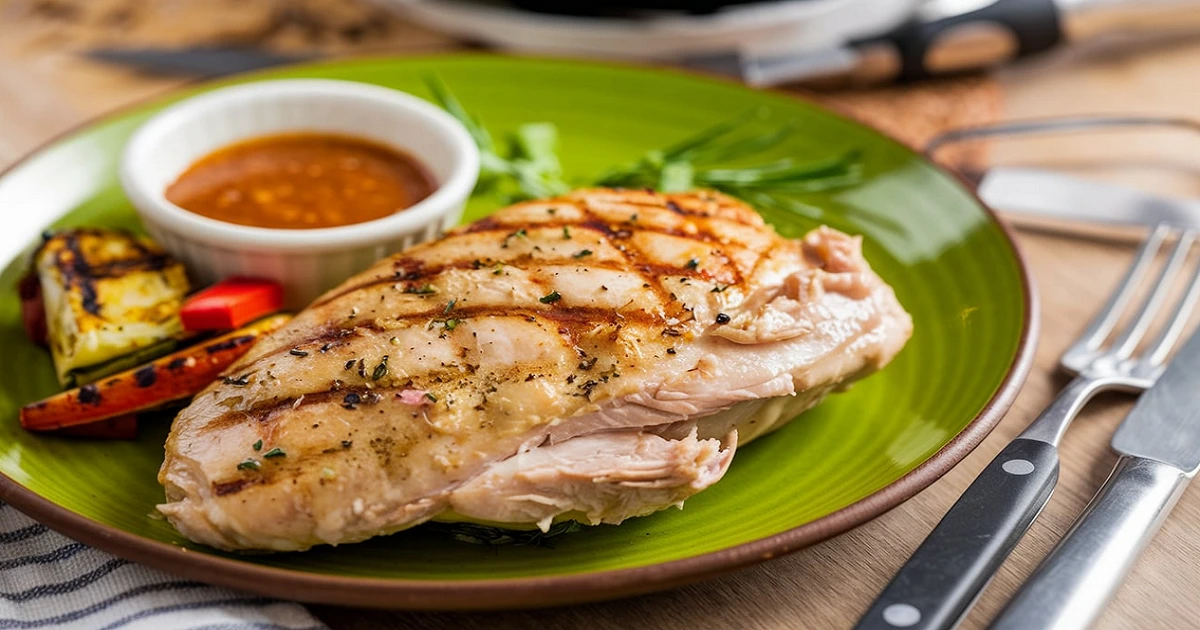If you’re wondering how to cook moist and tender chicken breasts, you’re not alone this popular protein can easily become dry if not prepared properly. Fortunately, with the right techniques, such as brining, marinating, and controlling heat, you can enjoy juicy, flavorful chicken every time. Whether you’re baking, grilling, or searing, following these steps ensures your chicken breasts stay tender and never overcooked. In this guide, we’ll explore the best practices to help you master the art of cooking perfectly moist chicken breasts.
Why Chicken Breasts Tend to Dry Out and How to Prevent It
Chicken breasts contain very little fat, which makes them prone to drying out. Without enough fat to lock in moisture, they tend to overcook quickly, especially at high temperatures. Unlike thighs or drumsticks, which contain more fat and connective tissue, breasts rely heavily on external preparation methods to retain moisture during cooking.
In addition, uneven thickness is a common issue with chicken breasts. The thicker parts may take longer to cook, leaving the thinner sections dry and overcooked. Proper preparation, including pounding or butterflying the meat, helps ensure even cooking.
Using moisture-retaining techniques like brining, marinating, and wrapping the chicken during cooking—significantly improves the outcome. For additional tips, explore juicy baked chicken ideas.
How to Brine Chicken Breasts for Maximum Moisture
1. Brining: A Must-Try Technique for Moisture
Brining is a simple yet highly effective method to ensure chicken breasts remain juicy and flavorful during cooking. By soaking the chicken in a saltwater solution, the meat absorbs moisture, which helps retain juices throughout the cooking process. The salt in the brine also breaks down muscle fibers, tenderizing the chicken while seasoning it from the inside. This technique works exceptionally well for baking, grilling, or roasting, where chicken is more prone to drying out under high heat.
How to Brine Chicken Breasts:
- Dissolve 1/4 cup of salt in 4 cups of cold water.
- Optional: Add aromatics like garlic cloves, peppercorns, or bay leaves for extra flavor.
- Submerge the chicken breasts fully in the brine and refrigerate for 30 minutes to 4 hours.
- After brining, rinse the chicken under cold water and pat it dry to prevent excess saltiness.
Brining adds a moisture buffer, ensuring the chicken stays juicy even if slightly overcooked. It also enhances flavor without requiring heavy sauces or additional seasoning post-cooking. Avoid over-brining beyond 4 hours to prevent the chicken from becoming too salty or mushy. This technique is especially effective when paired with other preparation methods, such as marinating or seasoning, to create a flavorful crust or sear.
Whether baking at 350°F or grilling over an open flame, brined chicken maintains its tenderness and moisture throughout.
2. Marinating for Flavor and Tenderness
Marinating chicken breasts serves two essential purposes: it infuses the meat with flavor and tenderizes it by breaking down proteins. Marinades with acidic ingredients—like yogurt, lemon juice, or vinegar—alter the meat’s structure, making it softer and easier to cook evenly. In addition, the oils in the marinade form a protective layer around the chicken, preventing moisture loss during cooking. This combination ensures that the chicken stays juicy and flavorful, even when exposed to high heat.

Simple Marinade Recipe:
- 1/4 cup olive oil
- 2 tablespoons lemon juice
- 2 garlic cloves, minced
- 1 teaspoon salt and black pepper
- Fresh herbs like thyme or rosemary (optional)
Instructions:
Coat the chicken breasts with the marinade and refrigerate for at least 30 minutes. For enhanced flavor, marinate overnight. The longer the chicken sits in the marinade, the deeper the flavors penetrate. Be sure to discard any leftover marinade that has touched raw chicken, or use it for basting during grilling or roasting (only if boiled first).
Marinating adds a layer of moisture that helps prevent the chicken from drying out during baking, grilling, or pan-searing. The acid also tenderizes the meat, making it more enjoyable to eat.
Uneven thickness is a frequent issue with chicken breasts, often resulting in overcooked, dry edges while the thicker parts remain underdone. Pounding the meat to an even thickness ensures uniform cooking, reducing the risk of dryness and allowing the chicken to retain moisture throughout the process. This technique is particularly helpful when baking, grilling, or pan-searing chicken breasts.
How to Pound Chicken Breasts:
- Prepare the Chicken:
Place the chicken breasts between two sheets of plastic wrap or parchment paper to prevent mess and protect the meat from tearing. - Pound the Meat:
Use a meat mallet or the flat side of a rolling pin to gently pound the thickest areas of the chicken. Continue until the breast reaches an even thickness of about 1/2 inch across. Avoid hitting too hard, as this can damage the texture. - Pat Dry:
After pounding, pat the chicken dry with a paper towel. This step ensures a good sear during cooking and prevents excess moisture from interfering with browning.
By evening out the thickness, pounding promotes consistent cooking and prevents thinner sections from overcooking while waiting for the thicker areas to finish. It also helps the meat absorb marinades more effectively and reduces cooking time. This technique ensures your chicken turns out juicy and tender, no matter the cooking method.
For more tips on preparing chicken breasts, visit Kinsley Recipes.
Best Cooking Methods for Moist and Tender Chicken Breasts
Different cooking methods yield varying results. Here’s a breakdown of the best ways to cook chicken breasts while keeping them juicy and tender.
1. Oven-Baking Chicken Breasts: Best Practices
Baking is one of the easiest ways to prepare chicken breasts, but it requires attention to detail to prevent dryness.
Steps for Moist Oven-Baked Chicken Breasts:
- Preheat the oven to 350°F (175°C).
- Place the chicken breasts in a baking dish with a small amount of broth or olive oil.
- Cover the dish with foil to trap steam and prevent the chicken from drying out.
- Bake for 25-30 minutes, or until the internal temperature reaches 165°F (74°C).
- Let the chicken rest for 5-10 minutes before slicing to allow the juices to redistribute.
Visit baked chicken recipes for more oven-based ideas.
2. Stove-Top Cooking: Quick and Juicy Chicken
Cooking chicken breasts on the stove allows for quick meals while retaining moisture. Searing creates a flavorful crust, while covering the pan traps steam inside, keeping the chicken juicy.

Steps for Moist Stove-Top Chicken:
- Heat oil in a non-stick pan over medium-high heat.
- Sear each side of the chicken for 2-3 minutes until golden brown.
- Reduce the heat to low, cover the pan, and cook for 5-7 minutes.
- Let the chicken rest for a few minutes before slicing.
3. Grilling Chicken Breasts
Barbecuing infuses chicken breasts with a delightful smoky essence, but it’s essential to handle them with care to prevent them from becoming dry.
Grilling Tips for Moist Chicken:
- Marinate the chicken before grilling to retain moisture.
- Grill over medium heat, flipping every 3-4 minutes.
- Brush the chicken with marinade or olive oil while grilling.
4. Slow Cooking: Preventing Dryness in the Crockpot
Using a slow cooker is a great way to prepare tender chicken, but it requires careful attention to avoid dryness. Since chicken breasts are lean, prolonged cooking without enough moisture can make them dry.
Tips for Keeping Chicken Moist in a Slow Cooker:
- Add Liquid: Use broth, sauce, or water to maintain moisture throughout the cooking process.
- Cook on Low: Set the slow cooker to low heat and cook for 2-3 hours to avoid overcooking.
- Use Bone-In Breasts: Bone-in chicken tends to retain moisture better than boneless cuts.
For more detailed advice, check out these Best Practices for Using a Slow Cooker. Following these guidelines ensures your slow-cooked chicken remains juicy and flavorful, even after hours in the crockpot.
How to Make Chicken Breasts Tender Without Losing Moisture
Achieving tender chicken goes beyond just keeping it moist; it requires breaking down the muscle fibers to create a soft, easy-to-chew texture. Using the right techniques ensures the meat remains tender while retaining moisture. Below are three effective methods to achieve perfectly tender chicken breasts every time.
1. Using Acidic Marinades
Acidic ingredients like yogurt, lemon juice, or vinegar work by breaking down the proteins in the chicken’s muscle fibers. This process tenderizes the meat, making it softer and easier to cook evenly. Marinades with acids are especially helpful when grilling or baking, as they prevent the chicken from becoming tough.
Pro Tip:
Marinate the chicken for at least 30 minutes, or overnight for better results. Avoid over-marinating, as too much acid can cause the meat to become mushy.
2. Sous Vide Cooking for Precision Tenderness
Sous vide is a low-temperature cooking technique where chicken is sealed in a vacuum bag and cooked in water at a precise temperature. This method ensures that the proteins never tighten, keeping the meat consistently tender and juicy. After sous vide, the chicken can be quickly seared for a flavorful crust.
Key Benefit:
Sous vide cooking eliminates the risk of overcooking, making it an ideal method for tender chicken breasts.
3. Pounding for Uniform Texture
Pounding chicken breasts not only ensures even thickness but also breaks down muscle fibers, resulting in a more tender texture. This method prevents tough spots and helps the chicken absorb marinades better.
By combining these methods, you can guarantee soft, tender chicken with every cooking method.
Avoiding Common Mistakes
Avoid these mistakes to ensure your chicken stays moist:
- Skipping Brining or Marinating: These steps enhance flavor and moisture.
- Overcooking: Monitor the internal temperature to avoid dryness.
- Not Resting the Chicken: Letting the meat rest before slicing prevents juices from escaping.
FAQs About Cooking Moist Chicken Breasts

1. What is the secret to moist chicken breast?
Brining or marinating the chicken and cooking it at moderate heat helps retain moisture.
2. How do I cook chicken breast without drying it out?
Use a thermometer, cover the pan, and avoid overcooking. Let the chicken rest before slicing.
3. How do you make chicken soft and tender?
Marinate with yogurt or lemon, pound the meat, and use slow cooking or sous vide.
4. How to stop chicken breast from drying out in a slow cooker?
Add broth, cook on low, and use bone-in chicken for better moisture retention.
Conclusion: Perfecting Moist and Tender Chicken Breasts Every Time
Cooking chicken breasts that turn out both moist and tender involves more than just following a recipe—it requires mastering specific techniques. Brining locks in moisture, marinating adds flavor and tenderness, and selecting the ideal cooking method ensures even results. Whether you choose to bake, grill, pan-sear, or slow-cook, the key lies in maintaining control over heat and allowing the chicken to rest after cooking.
By carefully monitoring cooking times and temperatures, you prevent the chicken from drying out. Resting the meat for a few minutes allows the juices to redistribute, ensuring every bite is flavorful and juicy. Using these strategies, you’ll achieve soft, succulent chicken breasts every time.
With the right preparation and cooking techniques, dry or rubbery chicken will become a thing of the past. Incorporate these tips into your routine, and you’ll enjoy consistently delicious, tender chicken.


When I initially commented I clicked the -Notify me when new feedback are added- checkbox and now each time a remark is added I get 4 emails with the same comment. Is there any means you can remove me from that service? Thanks!
Can I just say what a aid to find somebody who actually is aware of what theyre speaking about on the internet. You definitely know the way to carry a difficulty to light and make it important. More people must learn this and perceive this aspect of the story. I cant consider youre no more in style since you definitely have the gift.